Hepa filters for vacuum cleaners: features and types
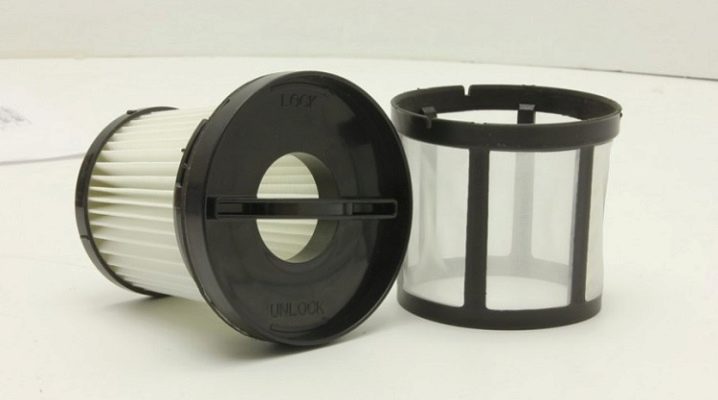
The availability of vacuum cleaners today does not surprise anyone. These useful rolling devices are found in every home and apartment. The main differences between vacuum cleaners are in their technical characteristics, in particular, in the ability to clean the air and keep the rooms clean.
The purity depends on the filtration system. Currently, HEPA filters are recognized as the highest quality.
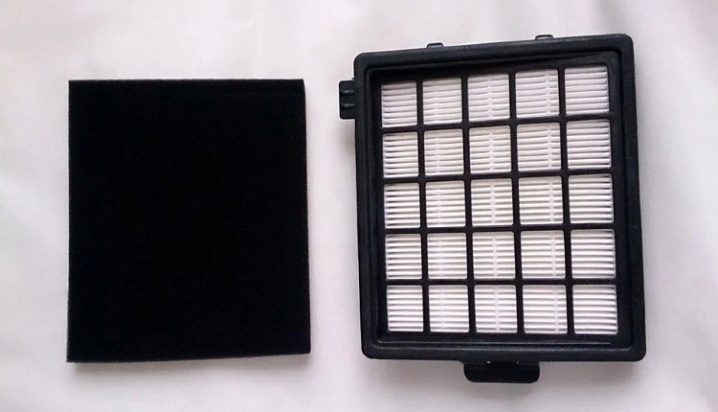
What it is?
The HEPA filter for the vacuum cleaner has an unrivaled ability to purify the air trapped in the vacuum cleaner from the smallest particles of debris and dust. The name is an abbreviation of the English phrase High Efficiency Particulate Arresting.
Any vacuum cleaner is equipped with a filtration system. Do not assume that a single HEPA filter is capable of performing the job that the manufacturers have assigned to a vacuum cleaner. Large particles will quickly clog the fine cleaner. As a result, the unit will lose suction power.
The problem is solved by installing a so-called coarse filter. It can be a linen or paper bag that catches large debris up to 1 micron in size. HEPA accounts for the smallest particles, with dimensions less than 1 micron.

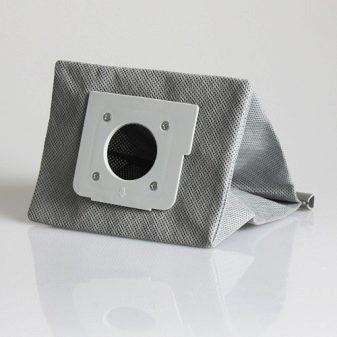
Fine filters are made of fibrous material. Sheets of this material are folded like an accordion and placed in a case made of durable plastic or metal. The distance between them is about 10-40 microns.
Filtration is based on four principles.
- Sieve effect. Dust particles are unable to pass between the filter fibers.
- Diffusion... Small dust particles that can pass through the obstacle remain on its surface, as they are in chaotic motion. These dust particles are knocked out of the air stream.
- Inertia. Relatively heavy particles do not keep up with the air flow around the filters and crash into them.
- Engagement. Medium-sized contaminants simply cling to the trapped debris already captured by the HEPA fibers.



Scope of application
The first HEPA filters were used in healthcare settings where absolute sterility is required. In the United States, they were installed to remove radioactive elements in nuclear fuel plants. Excellent results have served the rapid spread of devices in other areas of production and everyday life.
HEPA serves flawlessly in the following industries and facilities.
- Pharmaceuticals.
- Medicine.
- Instrumentation.
- Food and aerospace industries.
- NPP premises.
- Hotels and hotels.
- Household and industrial vacuum cleaners.

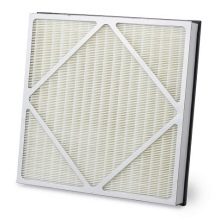

Unlike conventional filters, HEPA filters are installed at the outlet of air masses from vacuum cleaners, and not when sucked into it. The smallest dust particles remain inside the device, while clean, disinfected air enters the room. Neither animal hair, nor various allergens and any other smallest elements are able to overcome a reliable barrier.
When switching from traditional filtration to a fine cleaning system, dust particles floating in the air are captured. A healthy person can state that at the end of cleaning it is easier to breathe.
For lung patients and allergy sufferers, fine cleaning replaces medication.


Varieties
According to the method of application, filters are divided into disposable and reusable. The former, made of fiberglass or paper and accordion-folded, have a lifespan limited to a few uses. After the expiration of the allotted time, the device is removed, and a new one is inserted in its place.The second serve quite a long time. Products made of fluoroplastic can be repeatedly not only cleaned, but also washed, and then reused without loss of performance.
In both cases, a special antibacterial agent is applied to the source material, which is able to cope with pathogenic organisms that settle on the filters during their operation. The efficient operation of the household appliance is ensured by the presence of good integral seals.
The presence of even the smallest gaps imperceptible to the eye negates the operation of the filters.


Fine cleaning units are usually divided into classes. Classes are established by laboratory tests. The more particles the filter retains, the higher its class.
International standards EN 1822 / DIN 24183 define several classes for HEPA filters. So, a device capable of capturing 85% of microparticles with a size of 0.6 microns from the air is assigned a class 10. It is designated Hepa H10. Hepa H11 already captures 95% of dust. And the installation of the Hepa H13 brand is 99.95%.
A fine filtering device is a round or rectangular container packed with fibrous material. In modern vacuum cleaners, a cyclone filter is most often used. This significantly increases the suction power and the motor runs quieter than dust bag installations.


How to choose?
As a rule, the latest generation vacuum cleaners are already equipped with fine filters. Those of them, in which there is no secondary filtration function, have free spaces for the installation of additional equipment. In the latter case, the buyer himself decides on the purchase and installation of HEPA.
A primitive filtration system is installed on inexpensive equipment. Waste paper bags are disposable and are therefore thrown away with the litter, either immediately after cleaning is completed, or as they fill up. Reusable linen bags become clogged with dust.
Large particles are removed from linen dust collectors, while small ones remain inside the fabric. Washing bags significantly reduces their throughput. When cleaning premises using such vacuum cleaners, proper cleanliness of the surrounding air is not ensured. Dust particles raised during cleaning are deposited on the floor and furniture. The smallest of them continue to float in the air, penetrating the human lungs.



Those people who monitor the cleanliness of their homes and the health of loved ones should give preference to modern household devices. Although they are somewhat more expensive, the efficiency of cleaning with vacuum cleaners with HEPA filters is much higher.
Before going to the store, you should check whether the old unit is endowed with the possibility of installing additional equipment. If free space is found, its dimensions should be measured and compared with the dimensions of commercially available HEPA filters.
The fine cleaning ability is higher for those accessories that have a larger area.
Choosing a useful element of the vacuum cleaner, the consumer is obliged to carefully familiarize himself with its characteristics and conduct a visual inspection.


It is important that the folds of the "accordion" are lined up in even rows at the same distance. In addition, the material must be specially treated with chemicals for the most efficient air purification.
HEPA filters "don't get along" with the cleaning "brothers". Contaminated materials in a humid environment are at risk of the appearance and rapid development of fungal deposits. This combination obliges consumers to be attentive to technical devices and to regular additional maintenance work: cleaning and drying after each use.
If the question arises of choosing a one-time or multiple-use instance, priority should be given to something that can be cleaned. Its service life is much longer.
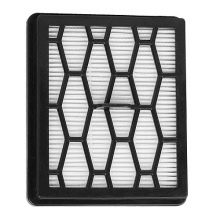

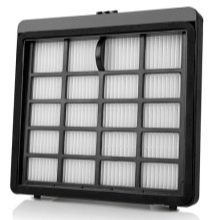
Care advice
Any household device works flawlessly within the period established by the manufacturer, provided it is used correctly. Since HEPA filters are designed to trap small particles, the ingress of large debris on it can cause significant harm, up to the destruction of the unit. Working without pre-filtration will certainly reduce the efficiency of not only the device itself, but also the entire household appliance.
Large elements can quickly clog channels, which leads to poor air flow. As a result, the engine overheats, the likelihood of its breakdown increases. The multi-level cleaning system of modern vacuum cleaners reliably protects the device from negative influences.


The service life of HEPA filters depends not least on the frequency of cleaning the premises, on how dirty they are and on the size of the litter. When the vacuum cleaner is in operation, dust accumulates on the filter. If you clean the device immediately after finishing work, there will be little debris. When used for the first time, where cleaning is carried out regularly, the filter may seem completely clean. And only over time, a large amount of dirt accumulates on it, which needs to be cleaned.
Disposable HEPA filters need to be changed as often as they become dirty and reduce their performance. Despite the fact that the rules of operation do not provide for any other cleaning, except for the simple removal of dust adhering to the surface, consumers are inventive. For example, in order to clean the device and extend its "life", blowing with compressed air is used. However, there is no reason to hope for a complete restoration of the original characteristics with such processing. Only relatively coarse dirt can be removed in this way. Small ones will remain in the body of the "accordion".
Replaceable filters cannot be washed. The material impregnated with an antibacterial composition deforms from water and becomes unusable.


Disposable filters must be changed in accordance with the instructions for their use. Then there will be no complaints about work and air purification.
As for reusable HEPA, the rules for care and operation should be fundamental here. Filters can be washed if there is an indication in the product passport. The same is indicated by a special marking with the letter "W".
The cleaning process of the washable device consists in placing it under a high-pressure water jet. Do not use detergents or brushes for cleaning.
After "bathing" the filter should be dried naturally at room temperature. Heating must not be used as the filter could be destroyed.
With proper care and moderate use, reusable HEPA will last up to two years.

You can learn more about how to restore an old Hepa filter with your own hands.













The comment was sent successfully.